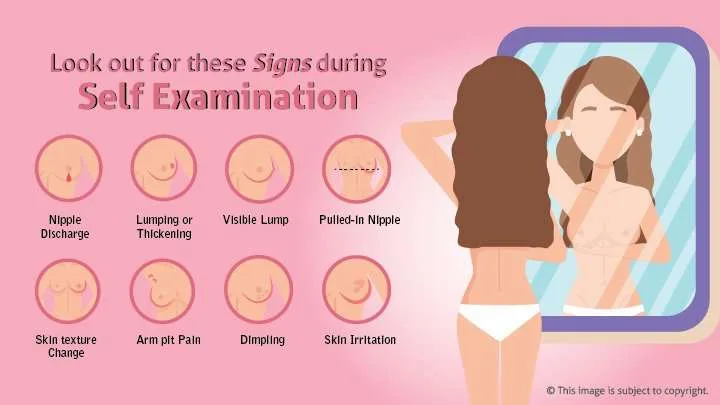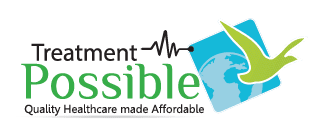Verified By: Dr. Donald John Babu (MBBS, MS, FCPS, MCh – Surgical Oncology, MRCS (UK), FICS)
Understanding Breast Cancer: What is it, Causes, Symptoms and Stages.
Breast cancer is one of the most common cancers affecting women today — but with awareness, early detection, and modern treatment, recovery rates are higher than ever. If you’re here to learn more or explore treatment possibilities, you’re already taking a strong, informed step toward protecting your health.
What is Breast Cancer?
Breast cancer begins when cells in the breast start growing uncontrollably. Instead of following the body’s natural renewal cycle, these abnormal cells multiply and can form a lump (tumour). Over time, if not treated, they can spread to other parts of the body.
Early detection saves lives. Cancers found in their early stages are far easier to treat and often do not require complete breast removal.
How Does Breast Cancer Develop and Spread?
Your breasts are made up of lobules (which produce milk) and ducts (which carry milk to the nipple). Breast cancer most often starts in these ducts (ductal carcinoma) or in the lobules (lobular carcinoma).
When cancer cells break away, they can travel through blood or lymph vessels to nearby lymph nodes — especially under the arms — and sometimes to other parts of the body such as the bones, liver, or lungs. This spread of cancer from where it started to another organ is called metastasis.
“The earlier breast cancer is detected, the better the chance it stays local and curable.”
Who Is at Risk of Breast Cancer?
Having a risk factor doesn’t mean you’ll get breast cancer — and not having one doesn’t mean you won’t. But knowing your risks helps you take preventive action.
Here are some common breast cancer risk factors:
- Family history or genetic mutations (like BRCA1 or BRCA2)
- Early menstruation (before age 12) or late menopause (after 55)
- Hormone therapy after menopause (combined estrogen + progesterone)
- Radiation exposure to the chest in youth
- Being overweight or physically inactive, especially after menopause
- Drinking alcohol regularly
- Not having children, or having the first child later in life
- Not breastfeeding — studies show each year of breastfeeding may reduce lifetime breast cancer risk by about **4%**1
Common Signs and Symptoms of Breast Cancer
Most breast changes are harmless — but it’s always best to get them checked.
Look out for the following warning signs:
- A new lump or thickening in the breast or underarm
- Nipple discharge (clear or bloody)
- Changes in breast shape or size
- Skin dimpling or puckering (orange-peel texture)
- Nipple inversion or changes in its position
- Redness, scaling, or swelling of breast skin

If you notice any of these symptoms, consult a breast specialist or oncologist as soon as possible. Early testing — such as mammogram, ultrasound, or biopsy — can confirm what’s happening.
Are you or any of your loved ones experiencing the similar Symptoms?
Consult an Experienced Doctor online for a free diagnosis
Understanding the Stages of Breast Cancer
Doctors classify breast cancer into stages to decide the best treatment approach:
- Stage 0 (DCIS) – Abnormal cells are confined to ducts and haven’t invaded nearby tissue.
- Stage 1 – A small, early-stage tumour (≤ 2 cm) with minimal or no lymph node spread.
- Stage 2 – Tumour 2–5 cm or some lymph node involvement.
- Stage 3 – Larger tumour or more lymph node involvement; may affect skin or chest wall.
- Stage 4 – Cancer has spread (metastasized) to other organs.
Each stage has effective treatment options, including surgery, radiation, chemotherapy, targeted therapy, or hormonal therapy, depending on your unique diagnosis.
How to Prevent and Detect Breast Cancer Early?
You can’t always prevent breast cancer, but you can lower your risk and improve your odds of early detection.
Simple preventive steps:
- Maintain a healthy weight and stay active
- Limit alcohol and avoid smoking
- Eat balanced meals with fruits, vegetables, and fibre-rich foods
- Breastfeed if possible. Studies suggest that when a woman breast-feeds she cuts her lifetime risk of developing breast cancer by 4.3 per cent every year.2
- Know your breasts — perform regular self-checks
- Get regular screenings as per your doctor’s advice
Many experts recommend starting mammogram screening at age 40, or earlier if you have a family history of breast cancer.
Modern Treatments for Breast Cancer in India
Today, women have access to advanced and minimally invasive breast cancer treatments in India. Depending on the type and stage of your cancer, your doctor may recommend:
- Breast-conserving surgery (lumpectomy) – removes only the cancerous lump, preserving most of the breast.
- Reconstructive surgery – rebuilds the breast shape after removal. (Read more in detail)
- Radiation, chemotherapy, or targeted therapy – to destroy remaining or spreading cancer cells.
- Mastectomy – complete removal of the breast (in some advanced cases).
- Hormonal therapy – effective if the tumour is hormone-receptor positive.
Treatment Possible offers world-class options for breast cancer treatment in India, connecting you with expert oncologists and advanced therapies at affordable costs.
> Learn more about modern about treatment options and cost.
Your Journey Toward Healing
If you’ve just been diagnosed or are supporting someone who has, remember — you are not alone.
Thousands of women beat breast cancer every year through timely diagnosis, personalized care, and emotional support.
Stay informed. Stay hopeful. And reach out for guidance when you need it — because early action truly saves lives.
References
- Source: National Breast Cancer Foundation & BCRF.org ↩︎
- Source: National Breast Cancer Foundation & BCRF.org ↩︎
